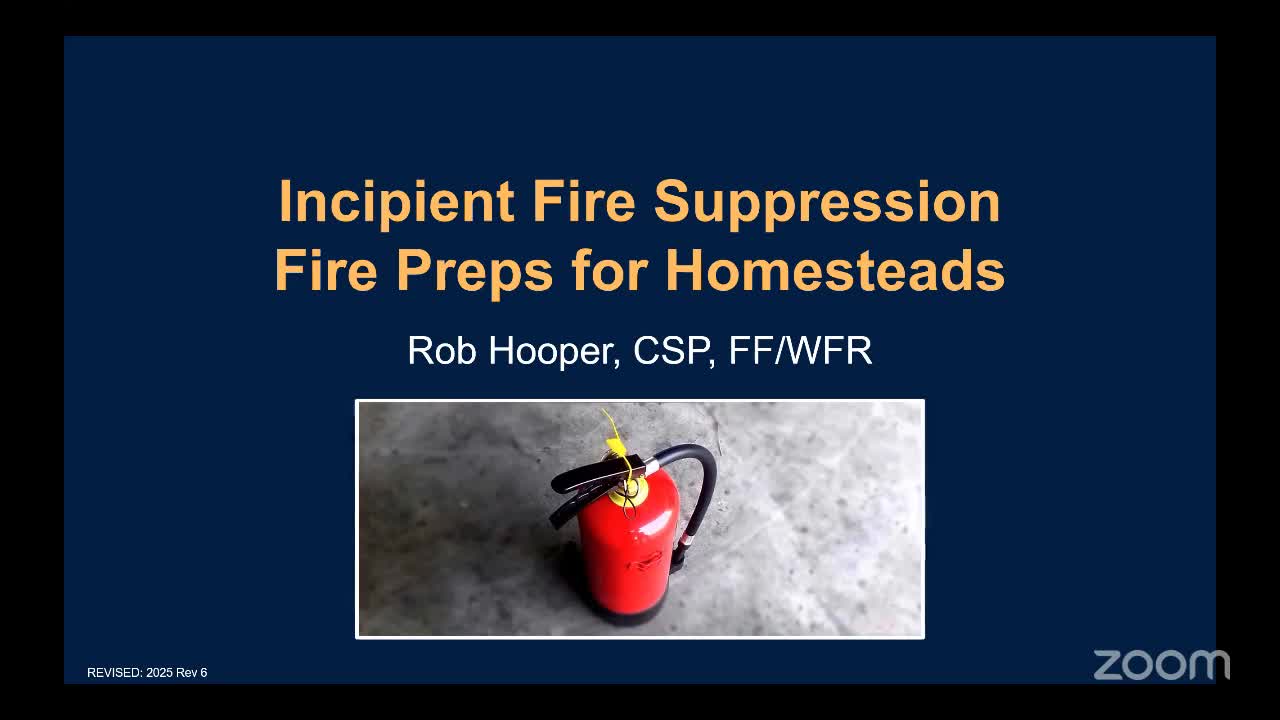Former Firefighter Shares Tips on Incipient Fire Suppression and Hazard Mitigation
June 28, 2025 | Bonner County, Idaho
Powered by Soar

This article was created by AI using a video recording of the meeting. It summarizes the key points discussed, but for full details and context, please refer to the video of the full meeting. Link to Full Meeting
The session began with the instructor sharing his extensive background in emergency response, emphasizing the importance of continuous learning in the field. He highlighted that the training would cover incipient fire response, which pertains to small fires that individuals might encounter in their homes or on their properties. The instructor stressed that while homesteaders may not be equipped to tackle large wildfires, understanding how to manage small fires is crucial.
Participants learned about the critical first moments of a fire, where quick action can make a significant difference. The instructor urged everyone to always call the fire department, regardless of the situation's perceived severity. "We'd rather show up to a false alarm than arrive too late," he stated, underscoring the importance of timely intervention.
The training delved into the combustion process, explaining that fire requires three elements: fuel, heat, and oxygen. By removing any one of these components, a fire can be extinguished. The instructor also discussed various types of fire extinguishers and their appropriate uses, noting that not all extinguishers are suitable for every type of fire. For instance, water should never be used on fires involving flammable liquids or certain metals, as it can exacerbate the situation.
Participants were introduced to the different classes of fires, including Class A for ordinary combustibles like wood and paper, Class B for flammable liquids, Class C for electrical fires, and Class D for combustible metals. The instructor provided practical advice on how to handle each type, emphasizing the need for proper training and equipment.
As the session progressed, the conversation shifted to the growing concern over lithium batteries, which have been linked to several fire incidents. The instructor shared a cautionary tale about a fire caused by an electric scooter charging in extreme cold, highlighting the risks associated with improper battery management. He advised attendees to be vigilant and proactive in managing battery safety, especially in off-grid settings.
The training concluded with a discussion on the importance of fire preparedness in the wildland-urban interface, where homes are increasingly built near forested areas. The instructor encouraged participants to take steps to mitigate fire hazards on their properties, reinforcing that knowledge and readiness can save lives and property.
As the attendees left the session, they carried with them not only valuable knowledge but also a renewed sense of responsibility towards fire safety in their community. The Bonner County Civil Defense Resilience Team's commitment to educating residents on these critical issues reflects a proactive approach to enhancing community resilience against fire threats.
Converted from Bonner County Civil Defense Resilience Team Presents Preparedness Training: Fire Defense meeting on June 28, 2025
Link to Full Meeting
Comments
View full meeting
This article is based on a recent meeting—watch the full video and explore the complete transcript for deeper insights into the discussion.
View full meeting